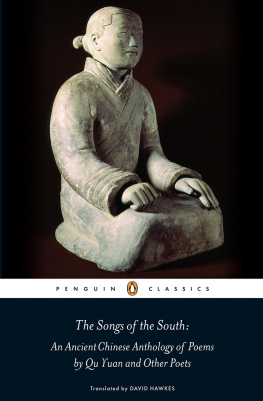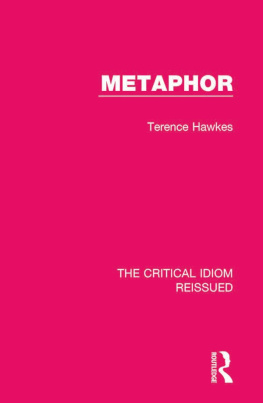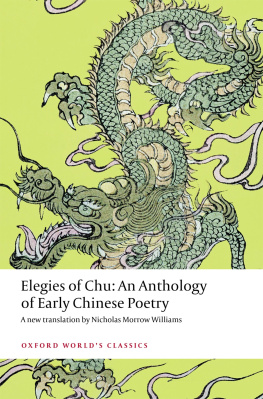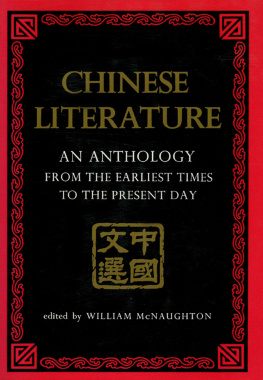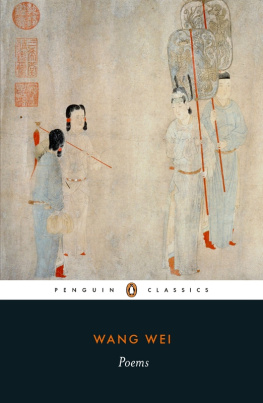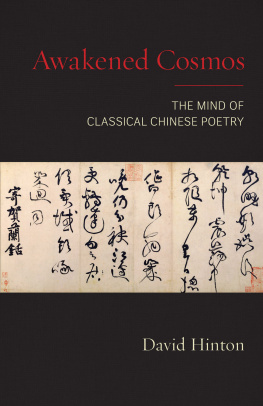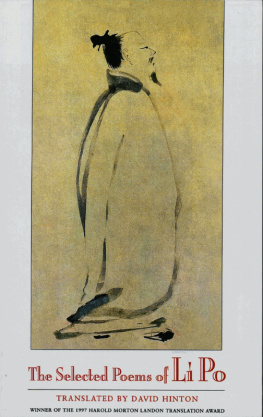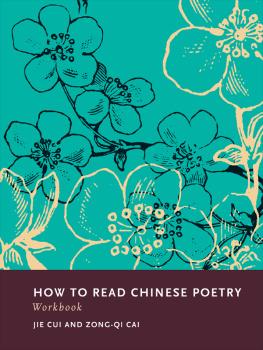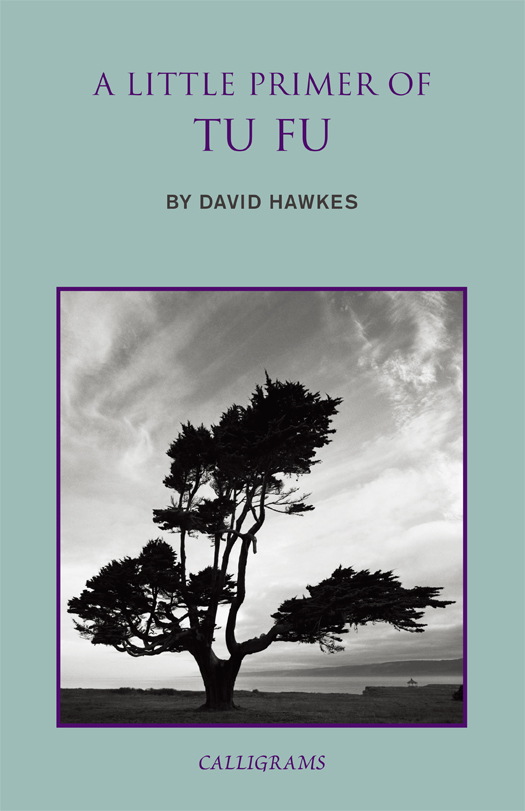Calligrams
Series editor: Eliot Weinberger
Series designer: Leslie Miller
A Little Primer of Tu Fu
By David Hawkes
1967 by Oxford University Press
1987 by The Chinese University of Hong Kong
Revised edition copyright 2016 by The Chinese University of Hong Kong
All rights reserved.
Library of Congress Cataloging-in-Publication Data
Hawkes, David.
[Poems. Selections. English & Chinese]
A little primer of Tu Fu / David Hawkes. -- Revised edition.
pages cm -- (Calligrams)
Includes index.
Includes poems in Chinese with transliterations into English.
ISBN 978-9629966591 (paperback) -- ISBN 978-9629968991 (ebook)
1. Du, Fu, 712-770. I. Title.
PL2675.H3 2016
895.113dc23
2015024867
Published by:
The Chinese University Press
The Chinese University of Hong Kong
Sha Tin, N.T., Hong Kong
www.chineseupress.com
New York Review Books
435 Hudson Street, New York, NY 10014, U.S.A.
www.nyrb.com
eISBN 978-962-996-899-1
v3.1
For Jean
Authors Introduction
I have written this book in order to give some idea of what Chinese poetry is really like and how it works to people who either know no Chinese at all or know only a little. To write it I have taken all the poems by Tu Fu contained in a well-known Chinese anthology, Three Hundred Tang Poems, arranged them chronologically, transliterated them, explained their form and historical background, expounded their meaning, and lastly translated them into English prose. The translations are intended as cribs. They are not meant to be beautiful or pleasing. It is my ardent hope that a reader who is patient enough to work his way through to the end of the book will, by the time he reaches it, have learned something about the Chinese language, something about Chinese poetry, and something about the poet Tu Fu.
Tu Fu (71270) is regarded by many Chinese as their greatest poet, but his poems do not as a rule come through very well in translation, which makes him a particularly rewarding poet to study in the original. Partly for this reason, and partly because he lived in eventful times and often referred to them in his poems, he seemed a good poet to choose for the purposes of this book.
The anthology Three Hundred Tang Poems dates from the late eighteenth century. It became the gateway through which generations of Chinese schoolboys were initiated into the pleasures of poetry, just as Palgraves Golden Treasury became a schoolbook over here. Its selection of Tu Fus poems (thirty-odd out of a total of more than fourteen hundred) is an intelligent one. The advantage of using it is that nearly all the poems of the anthology have been translated elsewhere, some several times over (see, for example, Soame Jenyns Selections from the Three Hundred Poems of the Tang Dynasty and Further Selections), and the venturesome reader of this book who wishes to extend his conquests should have little difficulty in obtaining a copy of the Chinese anthologyin which the Tu Fu poems will be familiar landmarksand continuing his study with the help of translations.
When preparing this book I gave a good deal of thought to the problem of transliteration. Tang phonology was quite unlike that of any Chinese spoken today: indeed, its sounds have to be reconstructed; and though scholars can get a very good idea of what they were like, their exact nature remains a learned guess. Moreover the reconstructed sounds are as a rule written in complicated and unfamiliar phonetic symbols. If we use the modern sound-values of the characters, many of the rhymes and much of the musical effect of the verse disappears. On the other hand, to insist that a reader who knows no Chinese or very little should begin with a kind of learned algebra unintelligible to the majority of Chinese living today would be to deprive him of the chance of relating whatever he might learn from this book with any Chinese he might succeed in learning subsequently. And the modern pronunciation will give him some idea of the sound and feel of Chinese verse. Even the different tones of Mandarin Chinese will give him a notion of the effect of tonality.
Having decided to transliterate into the sounds of Modern Chinesei.e. Mandarin, which is the dialect most often learned by foreigners and most widely taught in Chinese schoolsI was still faced with the problem of spelling. Which of the many systems should be used? In the end I decided to use Pin-yin, the system officially adopted by the Chinese Government, as being the most international form and also the simplest (compare Pin-yinqun with WadeGiles chan2, for example). In the transliteration of Tang verse it unexpectedly has the added advantage of producing eye-rhymes in many cases where the rhyme has been lost.
The most serious disadvantage in using Pin-yin is that in those cases where a reader is likely to know the Chinese word alreadyI am thinking particularly of place-names and personal namesPin-yin will produce forms which are weird and unrecognizable. Kiangsi, for example, becomes Jing-x and Chungking Chngqng; whilst even Tu Fu himself is transmogrified into D F. The answer to this particular problem seemed to be to keep the familiar spellings in the notes and translations while using the Pin-yin forms for transliteration of the text. This may strike some people as confusing but is, I believe, less confusing than any alternative would have been.
I should like to have given the reader a gramophone record of the sounds of these poems. As this is not possible, I recommend him to seek, if he can, a Chinese speaker who will make the noises for him. I do not propose to undertake the impossible task of trying to explain them in unscientific language. There are, however, a few symbols in Pin-yin which are used in unaccustomed ways, and these I shall explain briefly and approximately in the following table.
x is used for a sh sound made with the tongue-tip pressed against the lower teeth. X, for example, is a sound midway between see and he.
q is used for a ch sound made in exactly the same way.
c is like ts in tsetse fly.
z is like dz in adze.
zh can be achieved by omitting the first vowel from giraffe and pronouncing the gr on its own.
After s, z, c, zh, ch, sh, and r, i contracts into a sound somewhat like the u of suppose.
After j, q, x, and y, u is narrowed into a sound like French u or German . (Elsewhere it is the Italian u.) This sound is also found after n and l, when it is written with an umlaut: n, l.
After any of the above group of initials (j, q, x, and y) when labialized (i.e. when followed by a w sound) or any initial when palatalized (i.e. when followed by a y sound), e is pronounced like the e in egg. After any other initial an open


